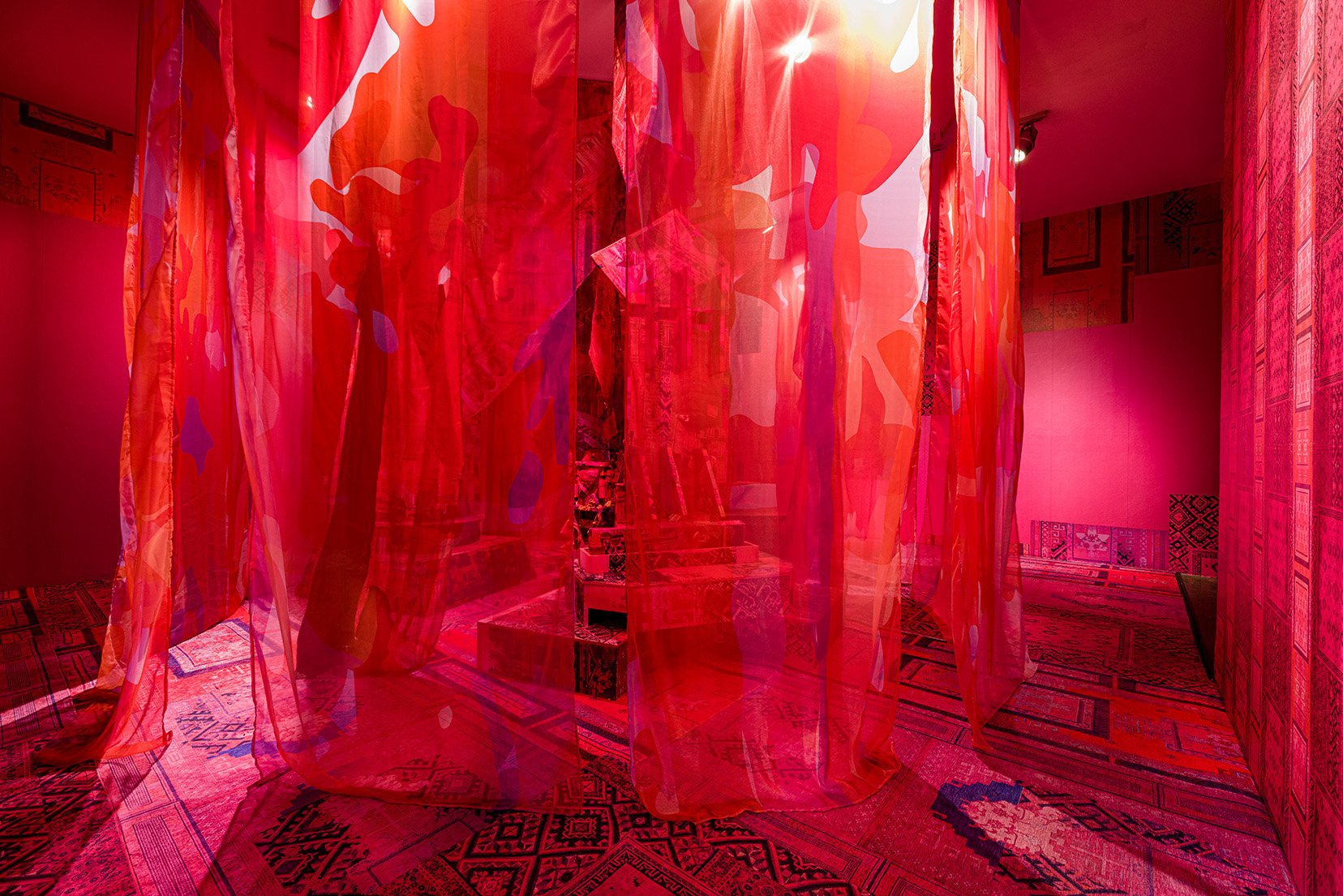
roots burrow through stones and hard facts, Solo Exhibition

"Roots Burrow Through Stones and Hard Facts", 2021, textiles, carpets, foam and wood sculptures, wallpaper, motion detector, 3 speakers with sound, 26 x 24 x 12 feet. Photo: Etienne Frossard
(scroll down for description of the project)
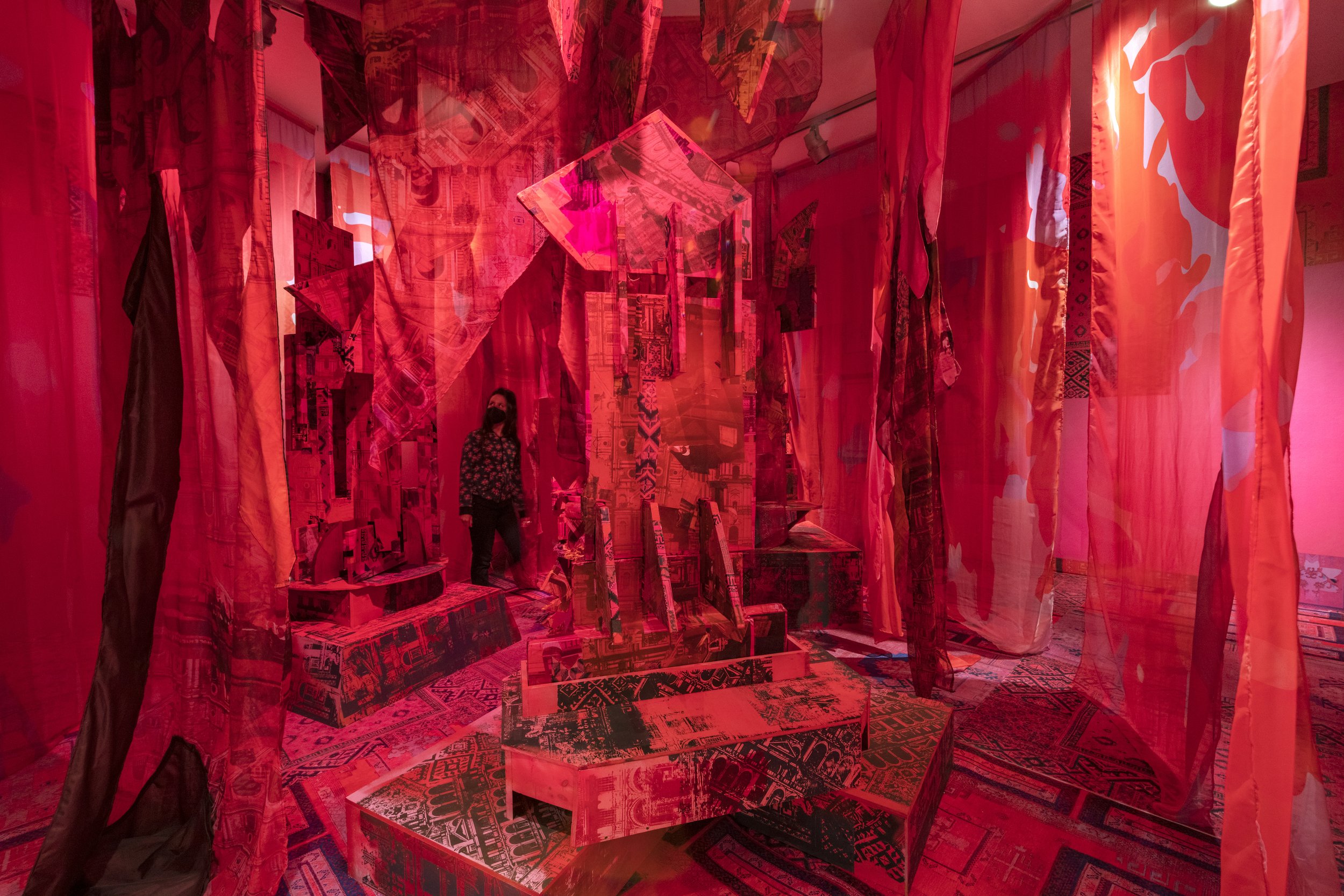
Photo: Adam Reich
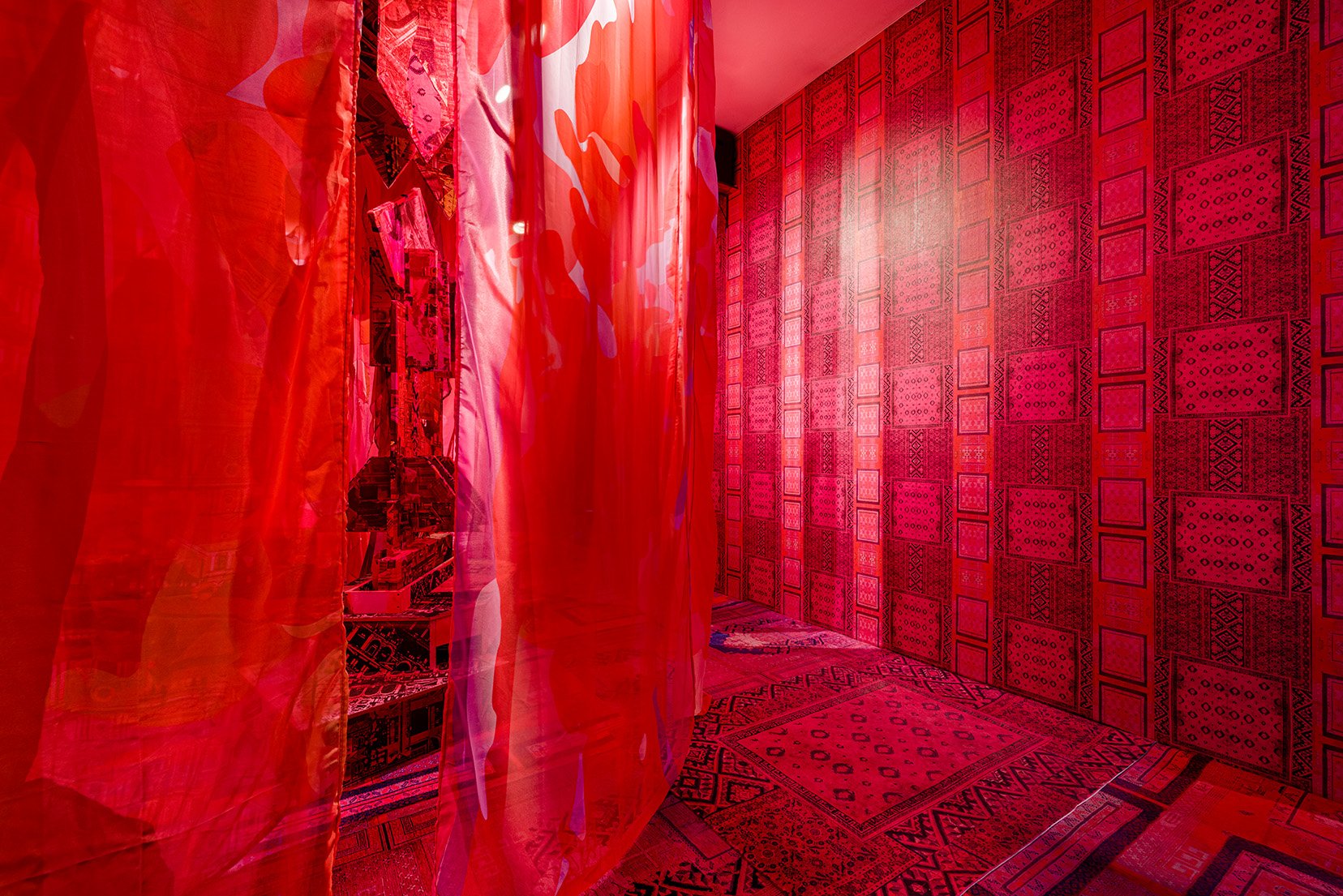
Photo: Etienne Frossard

Photo: Etienne Frossard
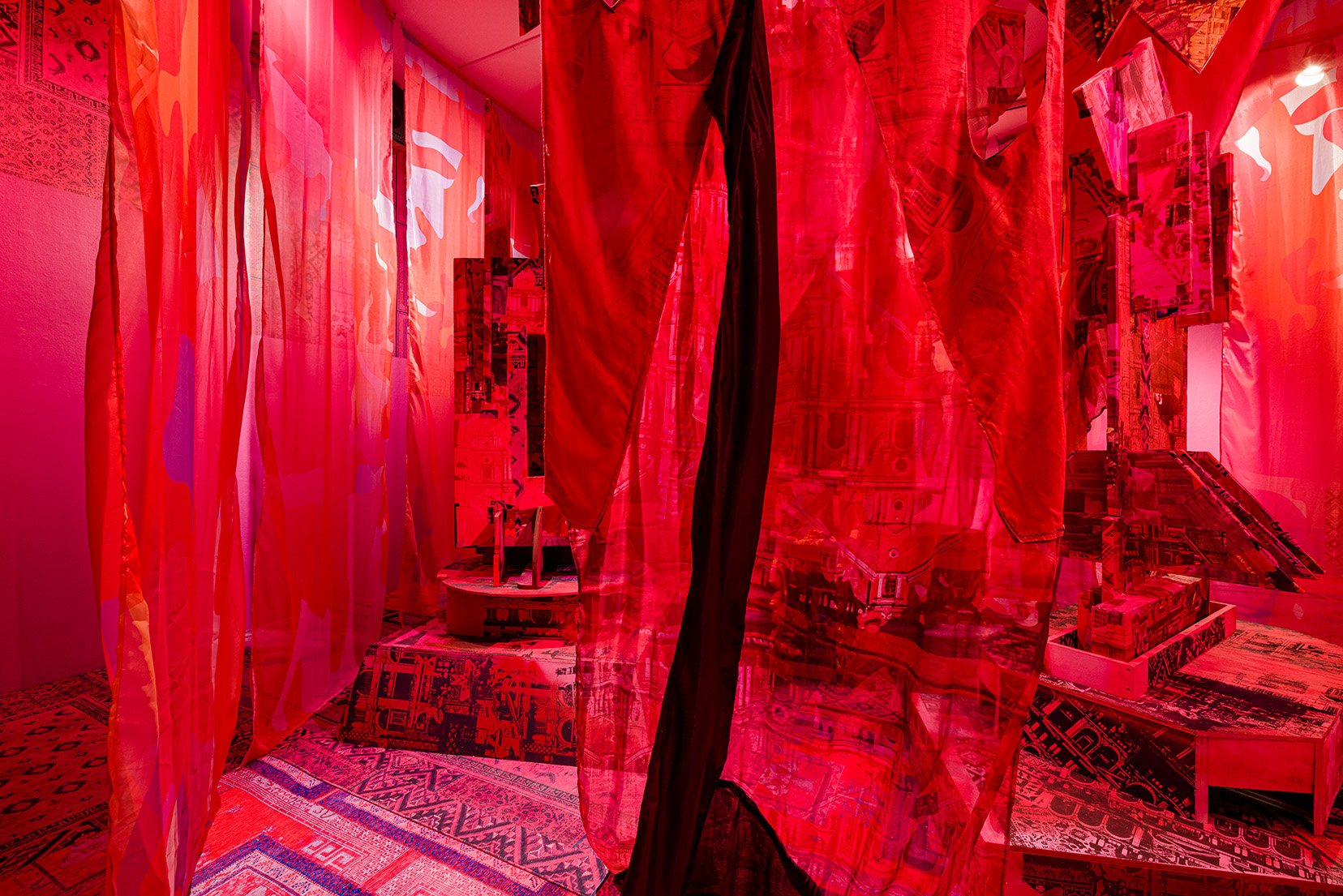
Photo: Etienne Frossard
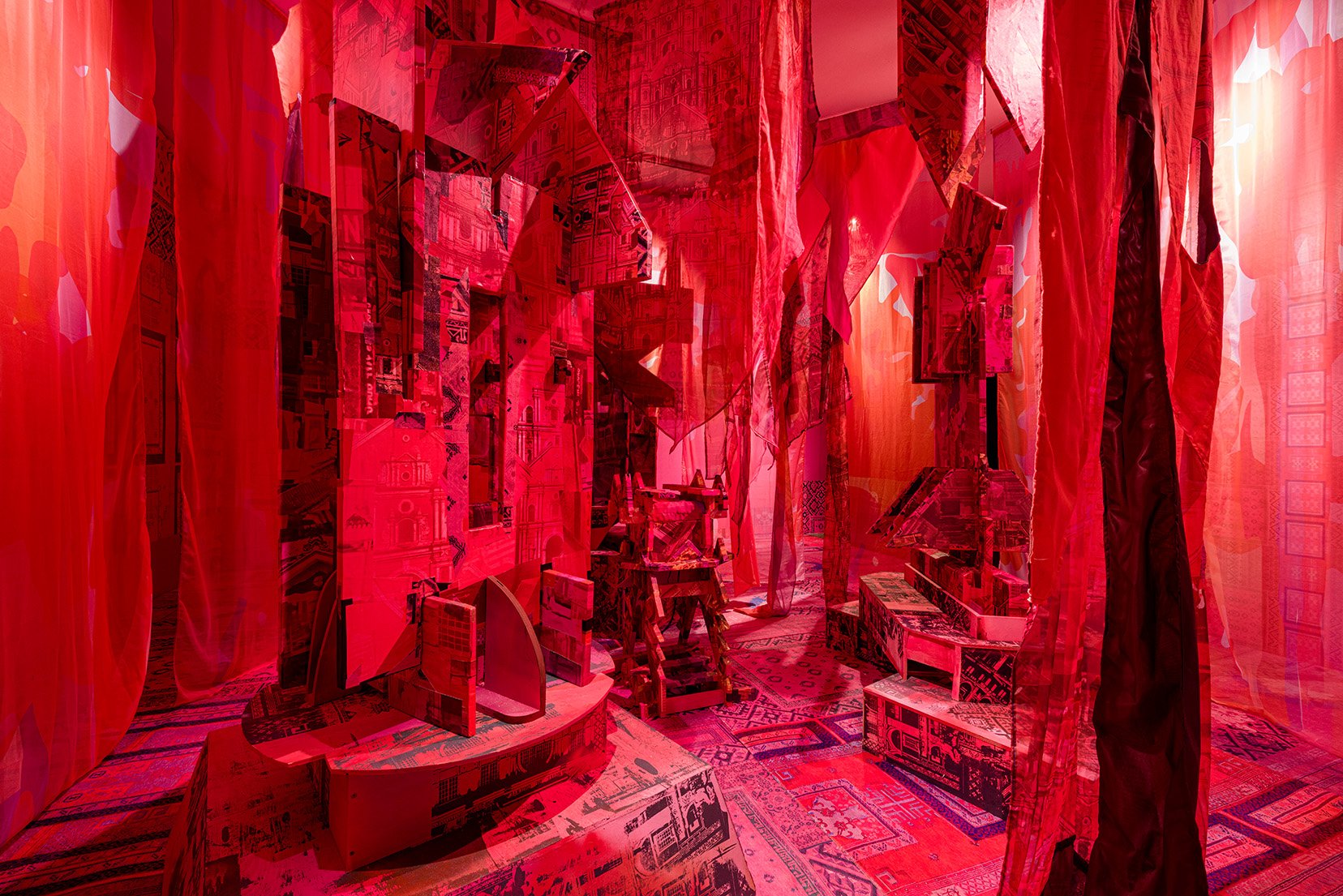
Photo: Etienne Frossard
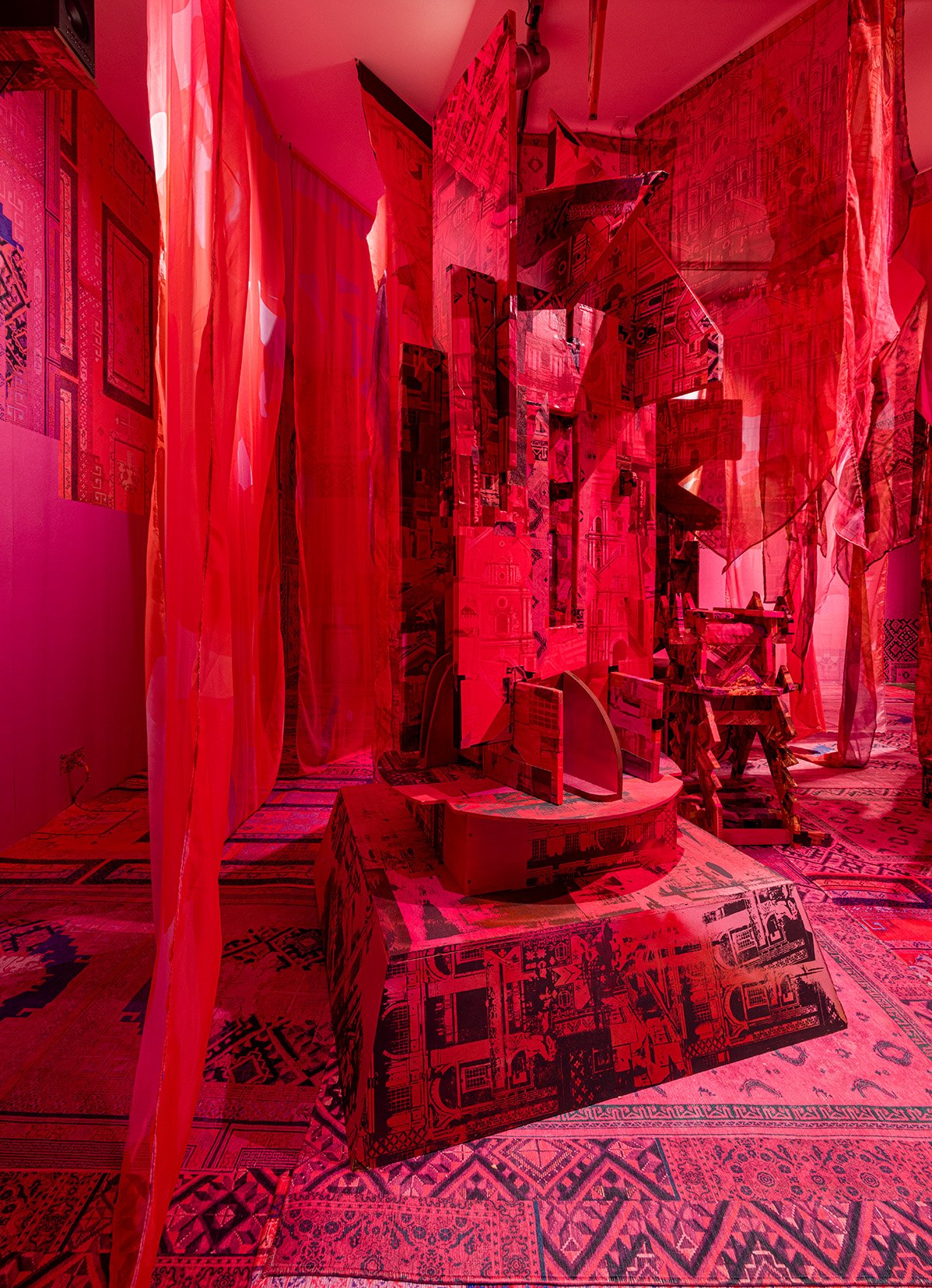
Photo: Etienne Frossard
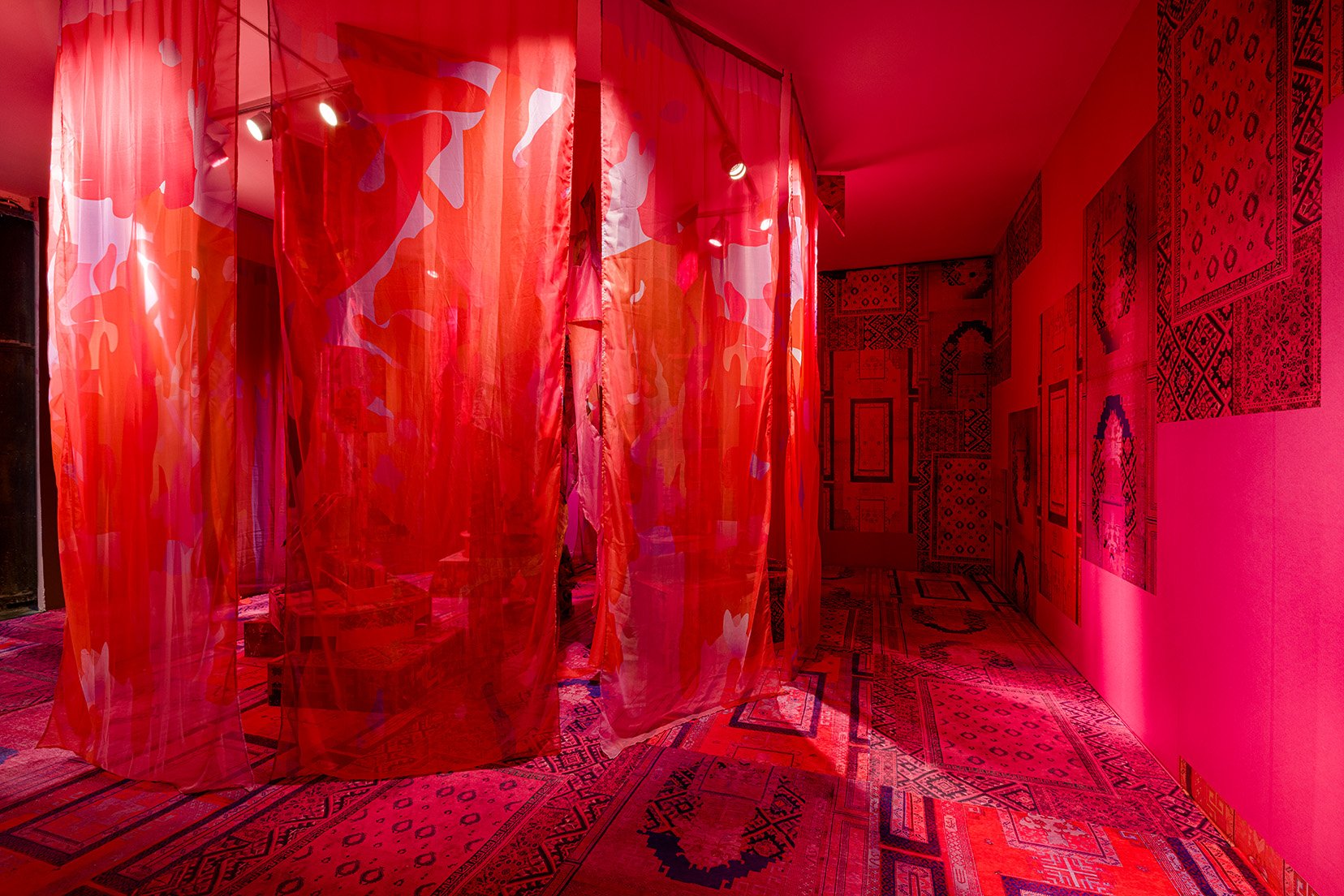
Photo: Etienne Frossard
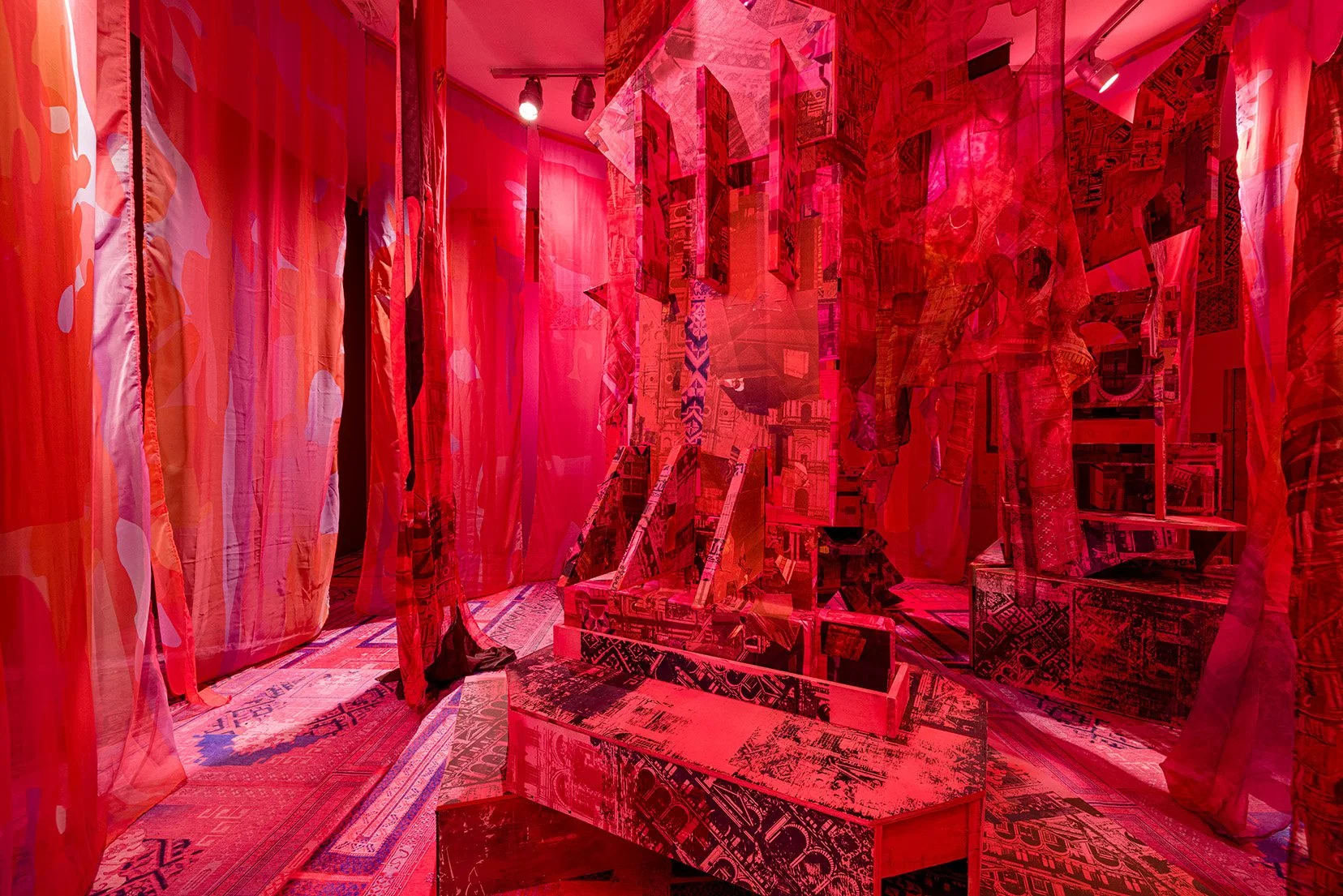
Photo: Etienne Frossard
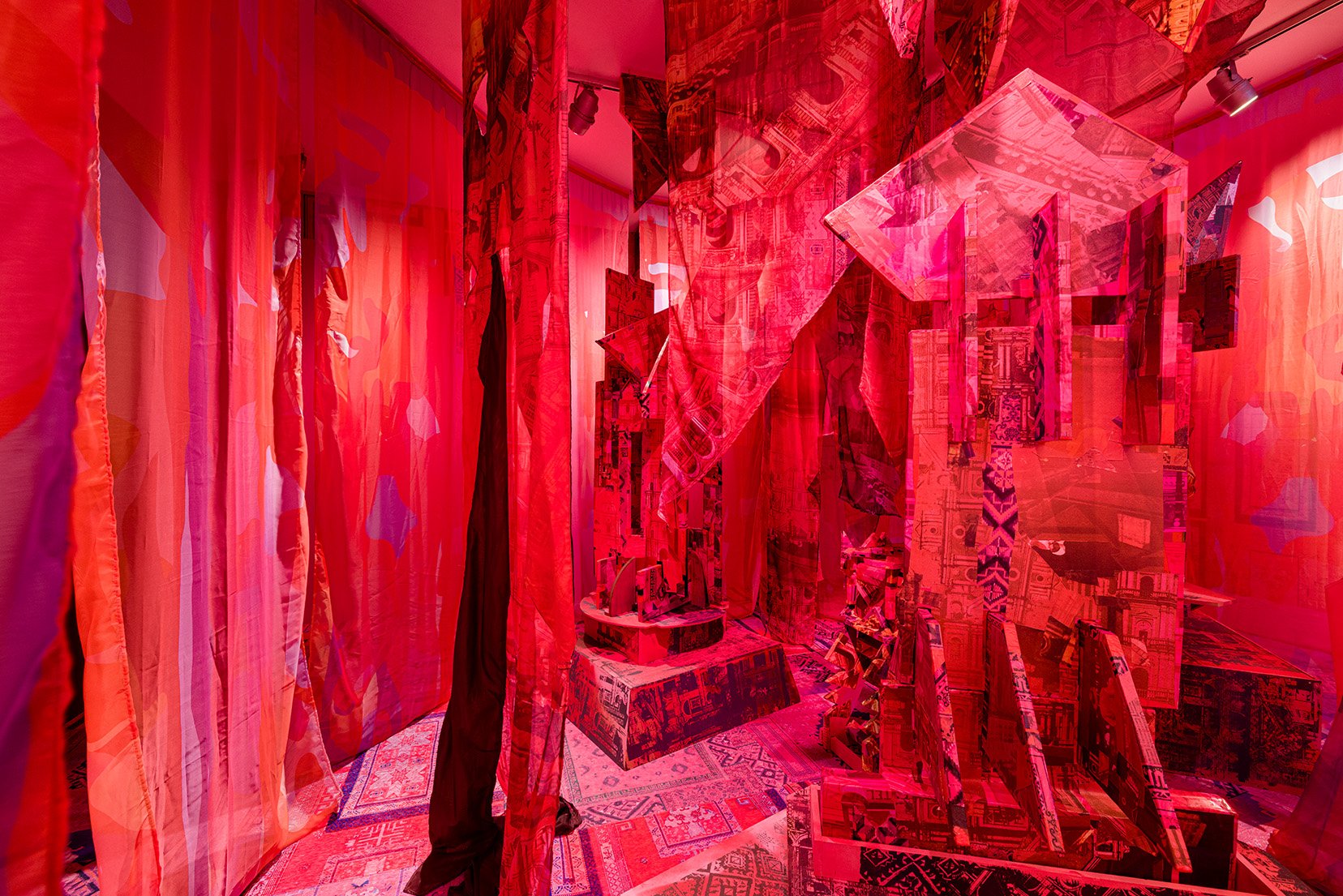
Photo: Etienne Frossard
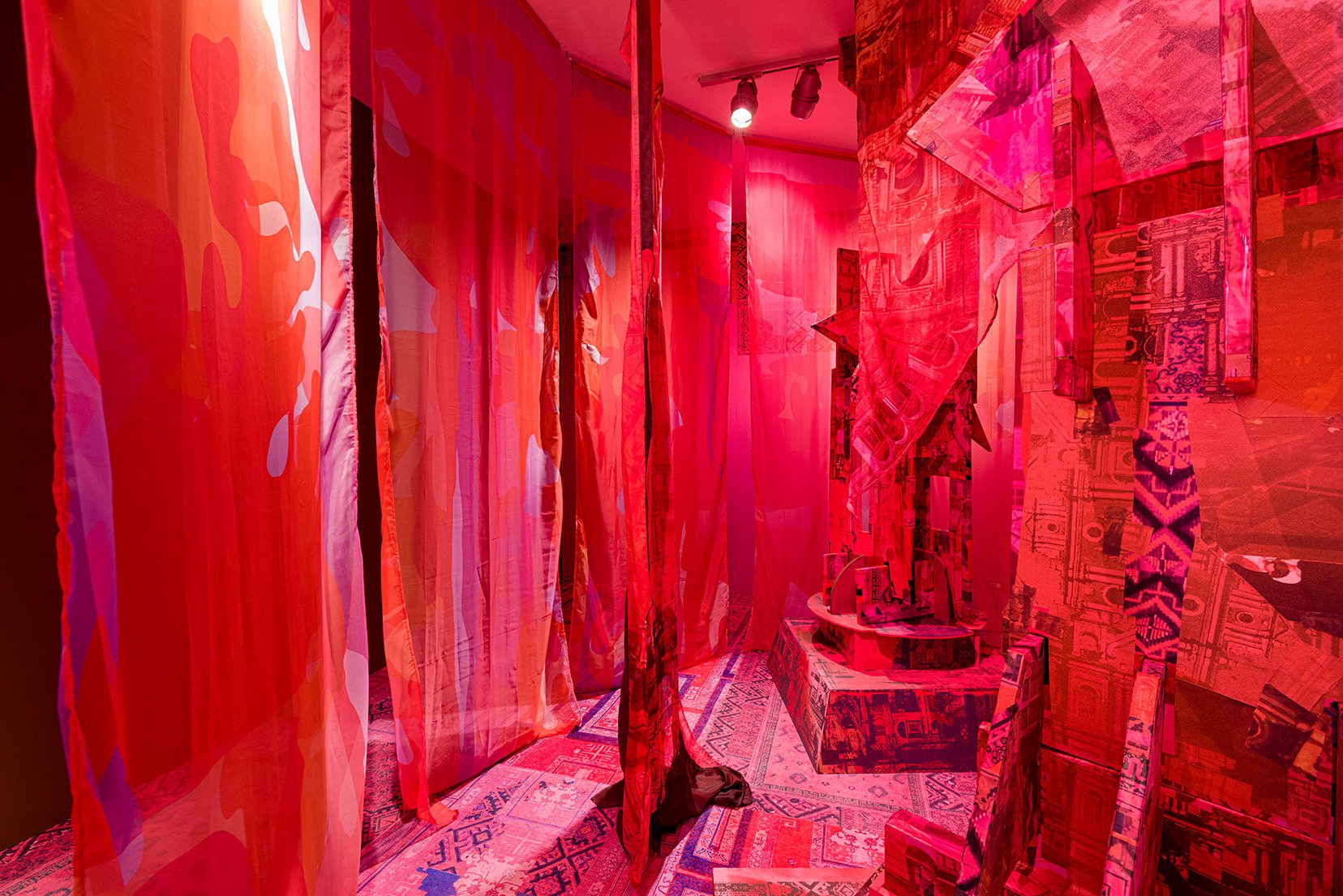
Photo: Etienne Frossard
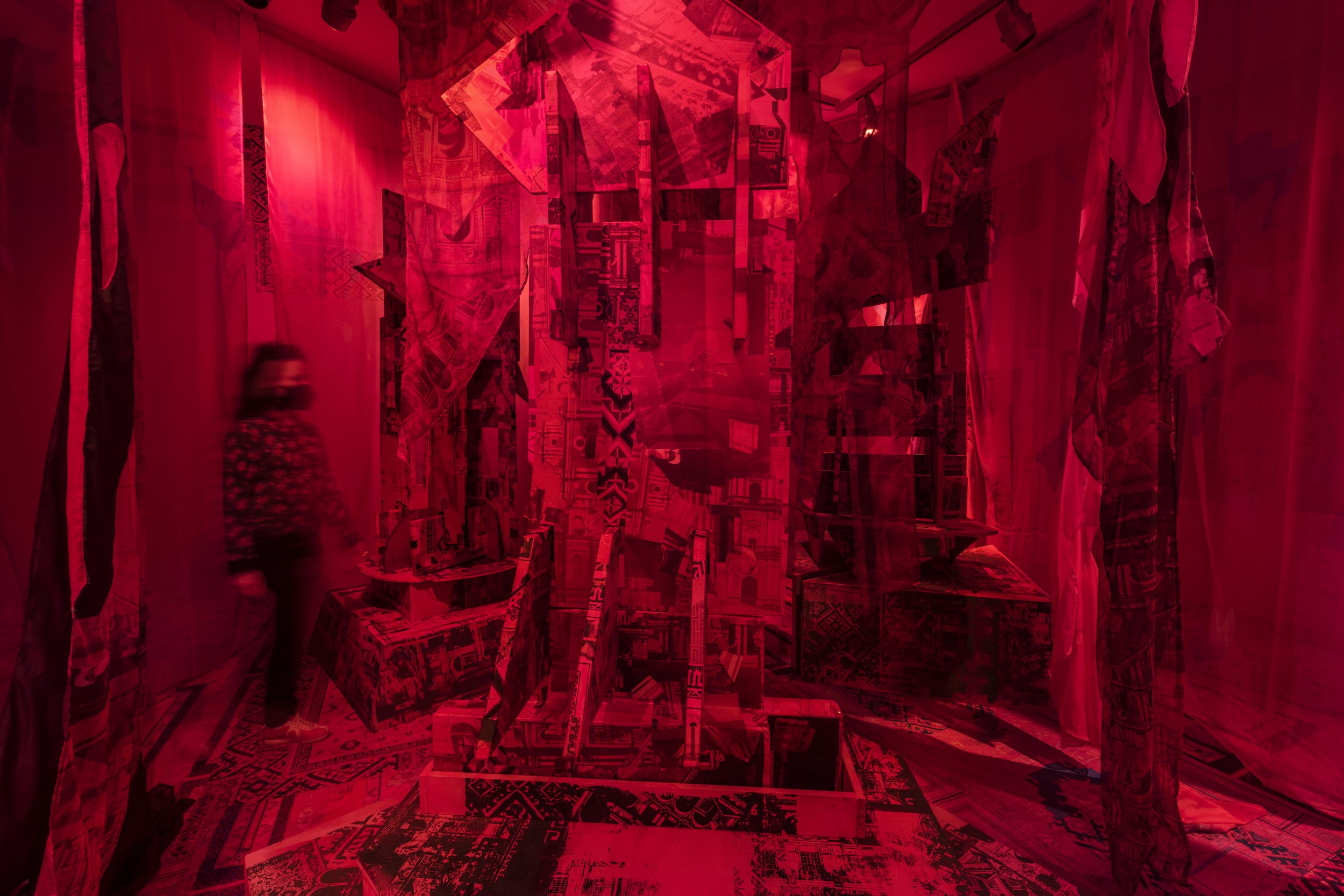
Photo: Adam Reich
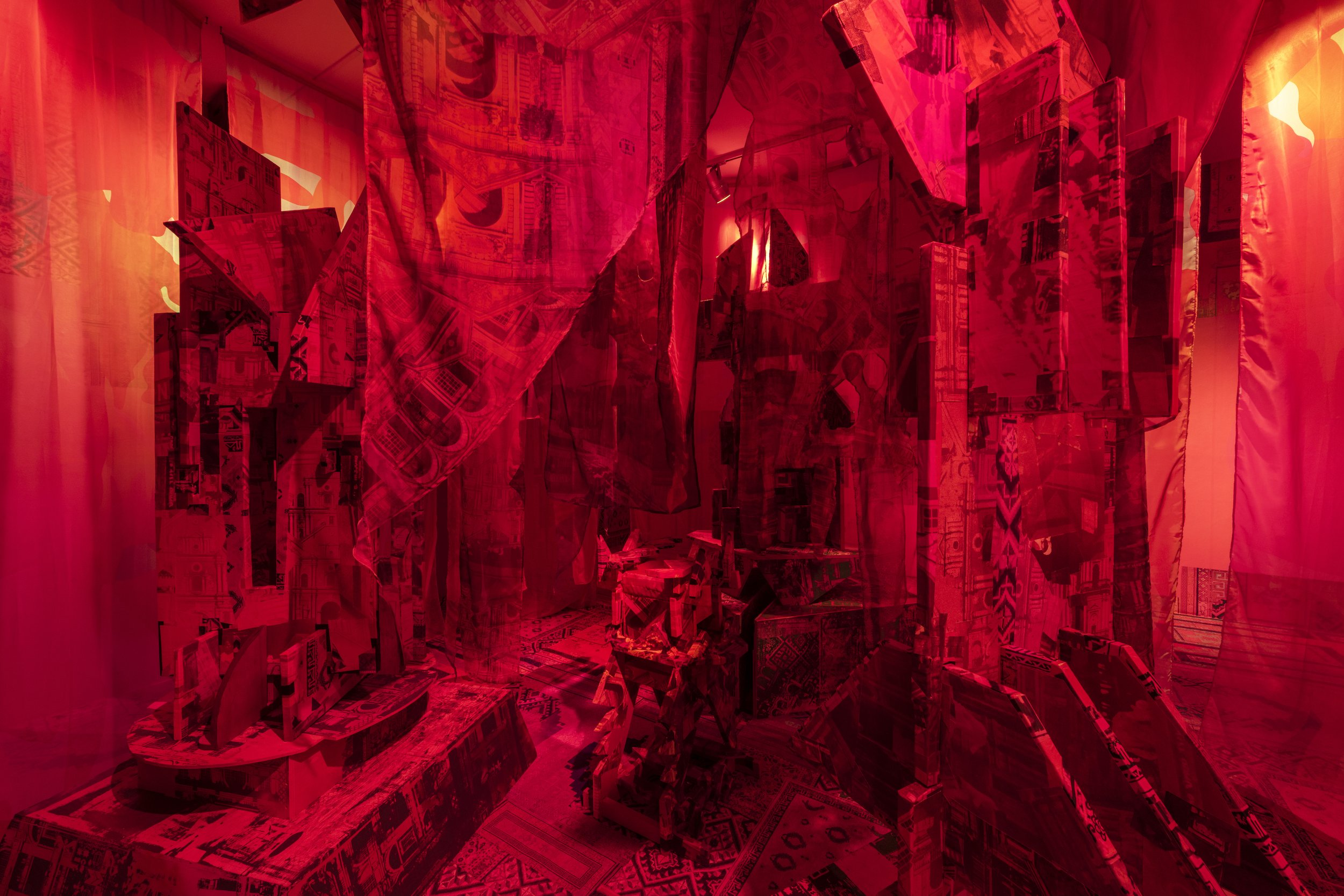
Photo: Adam Reich
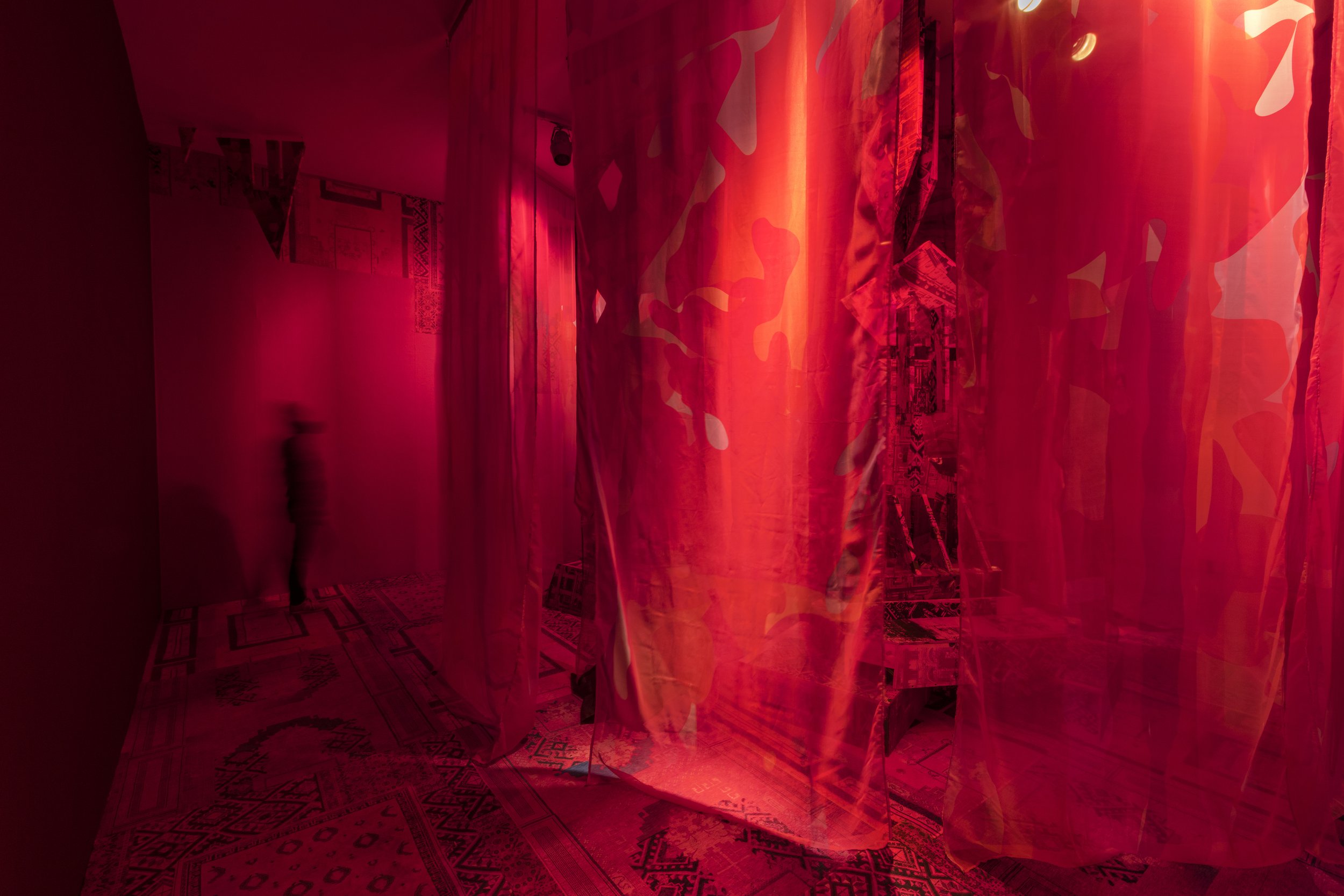
Photo: Adam Reich

Photo: Adam Reich
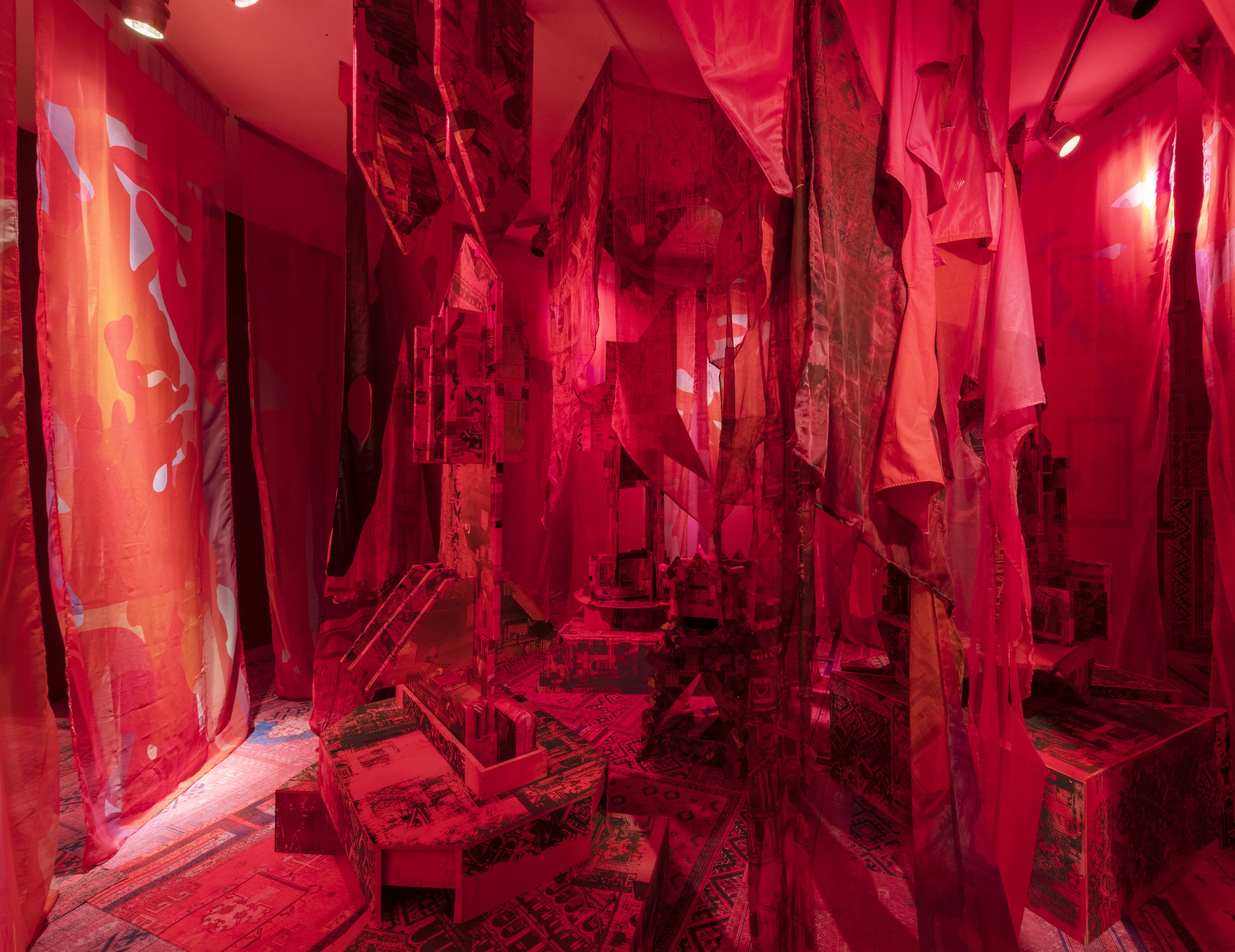
Photo: Adam Reich
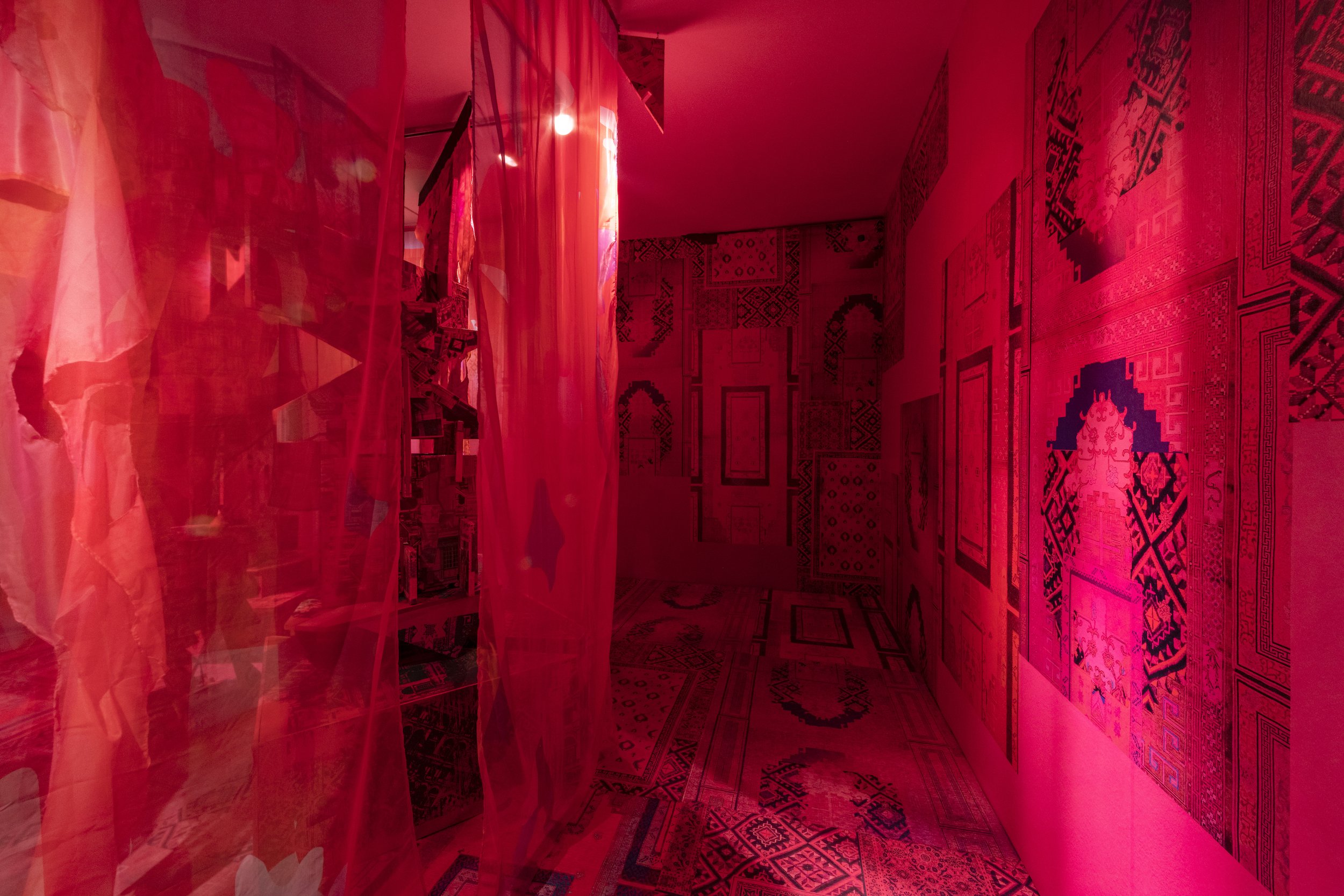
Photo: Adam Reich
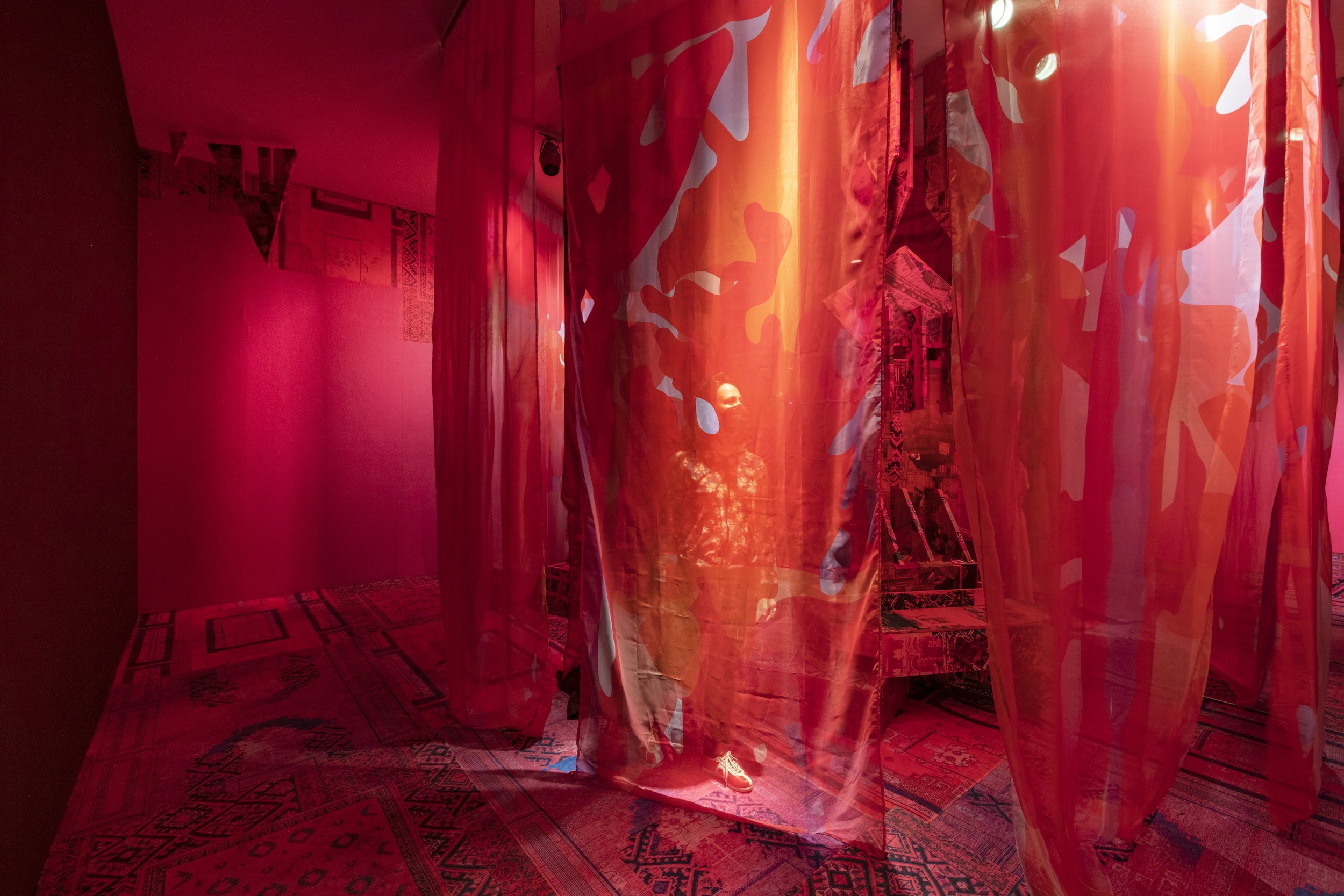
Photo: Adam Reich


"Roots Burrow Through Stones and Hard Facts", 2021, textiles, carpets, foam and wood sculptures, wallpaper, motion detector, 3 speakers with sound, 26 x 24 x 12 feet. Photos: Etienne Frossard & Adam Reich
The installation merges architecture and textiles from Filipino, Chinese and Spanish lineages. It is the secret doppelgänger of colonized Manila, where the Spanish attempted to control Filipinos and Chinese through separation of ethnicities. However in reality, people, languages, religions, races mixed and created new demographics, cultures and dialects. The colonial illusion of total control was not successful. I became interested in thinking through, “What would seepage look like? What would a porous city feel like? What is the color of vitality and agency?”
This installation is inspired by research of the first “Chinatown,” Binondo, which came to existence in the late 16th century in Manila because of the Spanish Empire. It was a means to control, contain, and separate the Chinese population. The facades of architectural structures inside of the space reference Intramuros, the walled Spanish Empire, as well as Bindondo. Surrounding the main architectures are translucent pink curtains with organic shapes, which are made up of zoomed in, digitized fragments of the photos of the architectures, when placed in the software Adobe Illustrator. The walls, floor, and sculptures are also covered in textile images that are a combination of Spanish, Chinese, and Filipino carpets, garments, and tapestries.
The space has a soundscape that I did in collaboration with composer Lau Nau. The ambient sounds are a combination of volcanos near the Philippines, ceramic bowls bought in Chinatown in NYC, humming, and a synth. At the center of the installation is a motion detector that activates another audio component. This audio was written in collaboration with writer Jason Daniel Schwartz. He re-collaged together text from American colonial textbooks about the Philippines to create a new, fragmented narrative. I recorded myself whispering this text, which Lau Nau looped and mixed in layers. When someone enters the space, the whispers get louder in volume. As they walk away, they progressively get quieter.